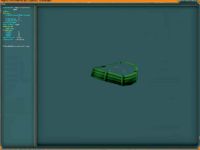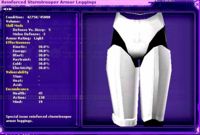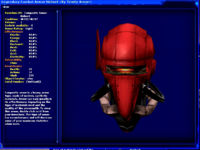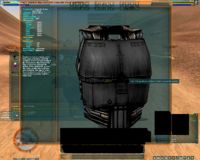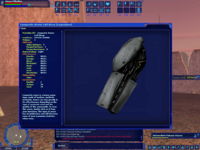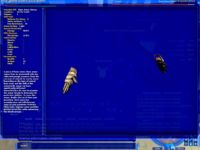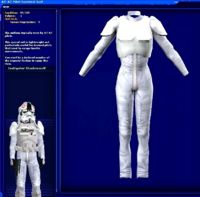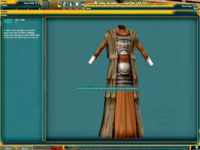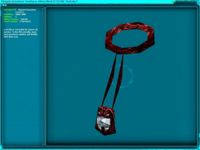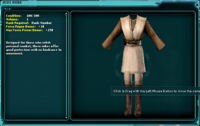Clothing And Wearables (Game Mechanics)
| This article or section needs proper wiki formatting. |
Game Mechanics - Mechanics Category
SWGANH Wiki is a repository of Star Wars Galaxies Developer information. This site is only meant to be used by SWGANH Developer team.
|
|
Wearable MechanicsFor a listing of wearable items, please see Wearable Item List
Wearables account for any item that can be equipped by the player onto their avatar. Players have a number of body slots in which to equip items to. Wearbles come in two forms; as clothing, or as armor. These include necklaces, rings, bracelets, belts, eyewear, backpacks, boots/shoes, legwear, shirts, aprons, chestpieces and shirts, cloaks and robes, left/right arm bracers, and left/right arm biceps. Wearbles can be equipped by double clicking on an item, using it from the toolbar or by using the radial clicking equip option. Most wearables have a condition rating that will lower when the item is hit or decays from death penalties. Looted Jewelry comes with 100 condition. Additionally Clothing Items received from quests or NPCS are given only 100 condition. Other wearable clothing items come with 1000 condition.
Clothing items offer no protection from damage taken in combat. Armor will reduce damage taken to the body parts on which it is worn. However, this protection comes at a cost. When armor is equipped, it will reduce the pool of some of your secondary statistics. To see the protective value of the armor and the cost to your statistics, simply examine your armor. Generally speaking, the more protective the armor, the higher the cost will be to your secondary statistics. If the armor would lower any one of your statistics to zero when equipped, you will not be able to wear that armor. Armor worn on the feet and legs will help prevent damage to your Action pool, armor worn on the chest, biceps, wrists, and hands will help prevent damage to your Health pool, and armor worn on the head will help prevent damage to your Mind pool.
2. Condition: This attribute is present on most wearables and indicates the current hitpoints remaining on the items. The left figure represents the current hitpoints on the item and the right represents the total max possible hitpoints. A wearable that reaches 0 condition can still be equipped and receive properties from it, with the exception of armor. Armor will lose all effective properties, with the exception of skill modifiers. Items at 0 condition cannot be repaired. 3. Volumn: Represents the current container contents of the Item. For more information about volumn counts, see Inventory Mechanics
An attribute found only on Jedi Force Ranking System Robes which denotes the rank at which the player must be in order to equip and wear the robe. 5. Force Regen Bonus An attribute found only on Jedi Robes and Force Ranking System robes in which displays the force pool regeneration rate bonus for equipping the item. 6. Max Force Power Bonus An attribute found only on Jedi Robes and Force Ranking System robes in which displays the amount that will be added to the player's force pool if the item is equipped. 7. Skill Mods: This attribute is found on any item in which skill modifiers have been placed onto it. For player crafted items with sockets, this attribute can be created on the item if the player adds a skill tape or attachment to the item. For looted items, this attribute only occurs on some looted exceptional, legendary items or certain quested rewards. Skill mods represent bonuses to a player's skills up to a maximum of 25. Looted Wearables are allowed up to 3 skill mods. The exception to this are the special loot wearables which have innate mods to them. These items can have up to 4 total skill mods. Attributes available to this category include:
This attribute appears only on wearables that can contain sockets. Jewelry, personal shield generators and all looted items are not allowed to have sockets. Sockets allow for the placement of attachments into the item. Attachments such as clothing and armor attachments add skill modifier bonuses to an item. Each attachment will consume one socket. As sockets are used up, their count will decrease and eventually the attribute will be removed once the last socket is used. Items that can contain suckets may hold anywhere from 0 to up to 4 sockets total.
9. Armor Rating This attribute is found only on armor and personal shield generators. Armor Rating ranges from None, Light, Medium and Heavy. If attacked by a weapon with equal Armor Piercing, there is no effect. If the Armor Rating is higher than the Armor Piercing of the weapon, damage is reduced by 50% for each level of difference. Therefore, if a weapon with no Armor Piercing strikes an Armor Rating of Light, damage would be reduced by 50%. Against an Armor Rating of Medium, it would be reduced by 50% and then another 50%. If the weapon has more Armor Piercing than the armor has Armor Rating, damage is increased by 25% for each level difference. All personal armor comes with an effective rating of light.
10. Special Protection This attribute is found only on armor. After Armor Rating has been applied, Armor Effectiveness comes into play. It reduces the remaining damage by the stated percentage. This attribute relates to the special innate resistance that an armor gives. For crafted armor This value cannot exceed 80% and slicing has no effect on it. For looted armor, the special protection value can go up as high as 90%. Some armors have innate special protection attributes already included in them. These are the available resist attribute types for this category depending on the armor type: Kinetic:
This attribute is found only on armor. After Armor Rating has been applied, Armor Effectiveness comes into play. It reduces the remaining damage by the stated percentage. Effectiveness is also referred to as general effectiveness or base effectiveness and has a maximum cap of 80% before slicing. The exception to this is with looted armor. Looted armor may have an base effectiveness of up to 90%. Additionally, Looted composite armor places all resists with the exception of vulnerabilities such as stun and lightsaber, into the general effectiveness category. Krayt dragon segment components can also be used for this same effect. This is the only armor that does this, however.
Kinetic:
This attribute is found only on armor. Armor Vulnerability denotes the damage types in which the armor provides no protection whatsoever. The Armor Rating is considered to be None and Armor Effectiveness is considered to be 0% against that damage type. Every armor has an innate vulnerability, or several.
Kinetic:
13. Encumberance This attribute appears only on armor. Armor encumberance represents the total amount of points reduced from the secondary ham pools by equipping this item. If the item exceeds the player's current stats, then the item cannot be equipped. Every point added to one of the attributes listed under this reflects a point deducted off of the player's secondary stats for that attribute. So for example Health attribute has secondary stats Strength and Constitution which would be reduced equally by the amount listed by Health.
Health:
This attribute appears only on crafted items or looted components. The crafter's name is listed here. General Item Mechanics, and General Crafting Mechanics for more information about Serial numbers
15. Serial Number: This attribute only appears on crafted items. This represents the alphanumeric code given to the item.
This attribute appears when a player places an item within an anti decay kit.
This attribute is found only on armor. This attribute appears when a player has had an item sliced by a smuggler.
Source References
|
